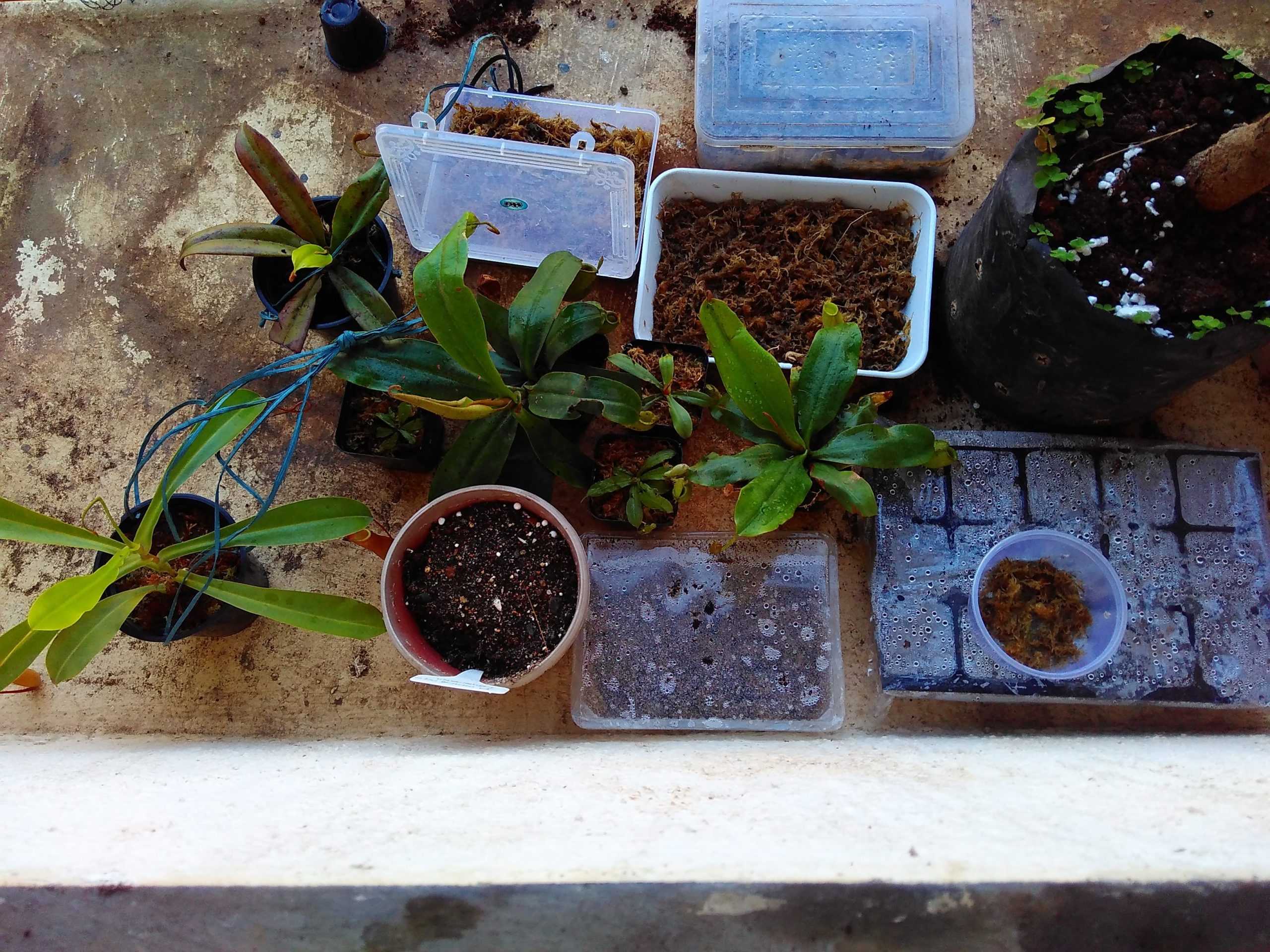Almost half the people who buy plants from me or discuss carnivorous plants end up asking where to buy sphagnum moss or other supplies necessary for growing carnivorous plants in India. Since I repeat this information often, I thought I’d put up a list of where I buy things from.
Please note, any links to products are affiliate links, because why not. However, I am only recommending products I have actually used myself.
Potting mixes and materials for growing carnivorous plants
Carnivorous plants need nutrient poor medium to grow in. This means that using the standard mud or potting mixes will not work. The plants will die. Suitable materials include cocopeat, peat, sphagnum moss, perlite, vermiculite. Some of these can be used on their own or mixed with others to create suitable medium to grow your plants.
Cocopeat
Cocopeat is relatively easily available in India, given our long shoreline and abundance of use of coconuts. Many of the larger nurseries in cities will have cocopeat. Please be sure to buy bricks of cocopeat and NOT potting mixes based on cocopeat, because those will have added nutrients that will kill your plants. The problem with using cocopeat is that it needs to be rinsed with water several times to remove salts and other nutrients before it can be used. Also unlike use for common gardening plants, soaking in calcium nitrate fertilizer to replace the sodium salts will not work as a relatively quick fix, because carnivorous plants don’t want calcium salts either. So you have to do this properly. Soak in water, drain, soak in water, drain and so on. Once the water removed from the cocopeat gets lighter, you must use purer water – rainwater, RO or distilled till you have got most of the dissolved content out of the cocopeat.
On the plus side, cocopeat is inexpensive and available relatively easily. For those not living in places where local nurseries sell cocopeat, here are some online listings where you can buy it. I’ve made comments under each.
Sphagnum moss
This one is trickier to find, but probably the best medium to use. The ones sold by many nursery sites as sphagnum moss are often not sphagnum moss, but forest moss. This is also usually quite dirty and full of debris and personally, I wouldn’t advise using it unless you are growing some of the larger nepenthes that you don’t mind gambling with. For any other carnivorous plants, this sort of moss is useless.
The very best sphagnum you could use is the AAA NewZealand Sphagnum. It is expensive, but it expands dramatically and is very good value for money, particularly for the more expensive and rare plants. I am pretty much discontinuing the use of all other sphagnum for my plants. I’m addicted.
But there are other and cheaper options too. Here are the acceptable listings of sphagnum moss I found to be acceptable quality. Please read the comments under the products for my opinion on them.
Coco chips, bark, etc
Coconut chips, bark and charcoal are other very interesting materials to use for larger nepenthes and orchids. Not much to comment on other than RINSE EVERYTHING YOU USE. Here is where you can find them.
Containers for growing carnivorous plants
This is simply a listing of various containers I have found useful for my plants. I’m commenting with the kinds of plants they could be useful for, but this is not expected to be a detailed listing.
I also start plants that will get larger later in smaller containers and move to progressively larger ones as their root balls grow and they need the space.
Seedling trays
Seedling trays are invaluable when starting plants from seed. They take up much less space, use less potting media and allow for better observation and growing of the tiny plants. They should be available with larger nurseries.
Here are some or similar to what I’ve picked up a time or two if you don’t have a nursery selling them near by.
Small pots
These are suitable for most carnivorous plants. Most drosera, pinguicula or byblis can probably be grown in them permanently, but they also form useful intermediate pots for drosophyllum and nepenthes, as well as larger drosera like drosera regia.
Bigger pots
These are various pots suitable for bigger plants. Hanging planters can be used for larger nepenthes plants.
Other interesting containers
Here are some other containers that have worked well at various times. Vertical gardening is really a cool way of maximizing the available space.
